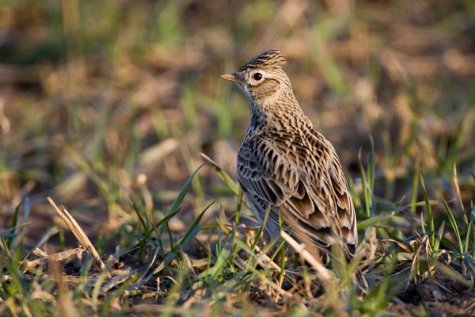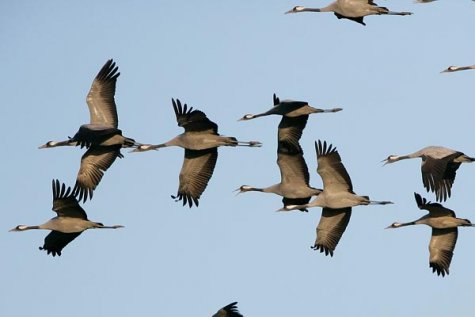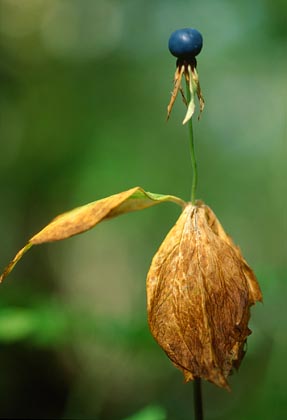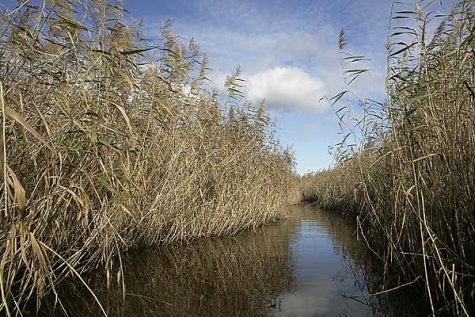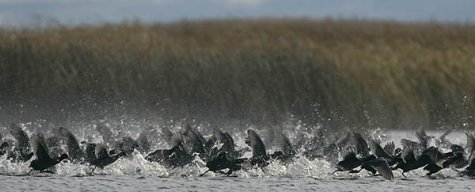Third week of September: coveting cones
When crossbills come in larger flocks the thoughts always go to winter. Is it already so cold in the far North and so little food that they come here? But there are others coveting these cones, a great spotted woodpecker comes with a fir cone in his beak, pushes it into a cavity in the weeping willow and - tokk-tokk-tokk. Attacking from one side and the other until the tousled cone lands in a pile of other cones under the tree. Curious, in the summer cones didn’t seem so exciting to the woodpeckers. The firs themselves are quite seriously patchy with yellow, because of the yellowing of the old needles. The spring wave of borers on the spruces have done their work – who died are now bone dry, and who survived risk becoming city Christmas trees.
Birds are in a serious hurry. Accompanied by wing swishings they head south. The skylarks go with a trill, the chiffchaffs with their silk-solk. In the firs on the shore goldcrests are heard, and the first long-tail tits on the move. Great tits have taken over our bird-feeder; when the sunflower seeds are at an end, the piece of lard is hammered to shreds. On top of that ... yes, they pry out the half-metre long rowan branches put as protection behind the doorpost. I suspect that each branch weighs a lot more than the great tit himself. The starlings have for some reason decided to go back north, in quite large flocks. Bird man Uku Paal counted more than 150 000 chaffinches during three hours at Mehikoorma on Saturday morning. In addition nearly a thousand jays. The jays that aren’t engaged in migration carry acorns instead – their raucous snickering, irritated at a human coming in view, carries far.
In the plant kingdom there are no really important changes. Leaves just go on dropping ... But ever new flowers open in the cleared grain fields. And even in the pasture fields clovers, lady’s mantle, cranebills and hawk’s-beards flower again. But the bulrushes in ditches bare more and more of their white legs because of the shortage of water – so that the lower part is plain bone-white, but between the green sheaf of leaves sit powerful brown clubs. Something has shrivelled all the ferns in the woods, the splendid tropical vegetation in the wet river meadows has been replaced with dry yellows. But the alder stays deep green as before, only a few brown leaves beneath the tree hint at the coming of autumn.
Although rain comes down often, and plentifully, morning sunrise on the lake is usually red in the cloud bands. Rain and sunshine at the same time is an everyday phenomenon, often the rain cloud sets up a powerfully bright rainbow. Last week there was even one with a full span and additional pillars at both sides. When it is not raining, it goes cold, temperature is already quite often below 10 degrees – and on Friday morning the grass in two low spots seemed somehow white and cold. The mosquitoes who last week bored their beak into one’s flesh at every opportunity now press through the window openings, into dark corners, to winter. But strangely the grasshopper chorus in the evenings is one of the loudest sounds. Of course – it is still summer ... But soon, on Wednesday, September 23, at 0.18, autumn begins, and trees get orders from above to drop their leaves.
Keeping a ramrod straight back in autumn is no good. Everybody knows how at first, walking around in the mushroom forest, there doesn’t seem to be a single mushroom around. And then, only a few bendings-down and peeks under the spruce branches are enough to find chanterelles laughing up at you. To this advice Mikk Sarv adds that one should bow similarly in a field: pull up the carrots and beetroots, head down in reverence. Bow, and unto you shall be given! FOR CHILDREN: Scarf tail
The idea for the autumn game this time is borrowed from dog-owners, who now - with much toil - pick the burs of burdock and bur marigolds from their pets’ fur. Tie a long woollen or fleece scarf so that it trails behind you, and go for a walk on the seashore, or at a forest edge. At home pick the scarf clean from all that has attached itself to it. A magnifying glass is good to have for studying the booty. In addition to the burs mentioned, there can be hairy seeds of cleavers and other bedstraws, leaves, tree needles, some bugs like the sloebug, and even ladybirds. Enjoyable discoveries, to last a long time!
Citation:
On Wednesday, September 23 at 0.18, autumn begins and trees get orders from above to drop their leaves

